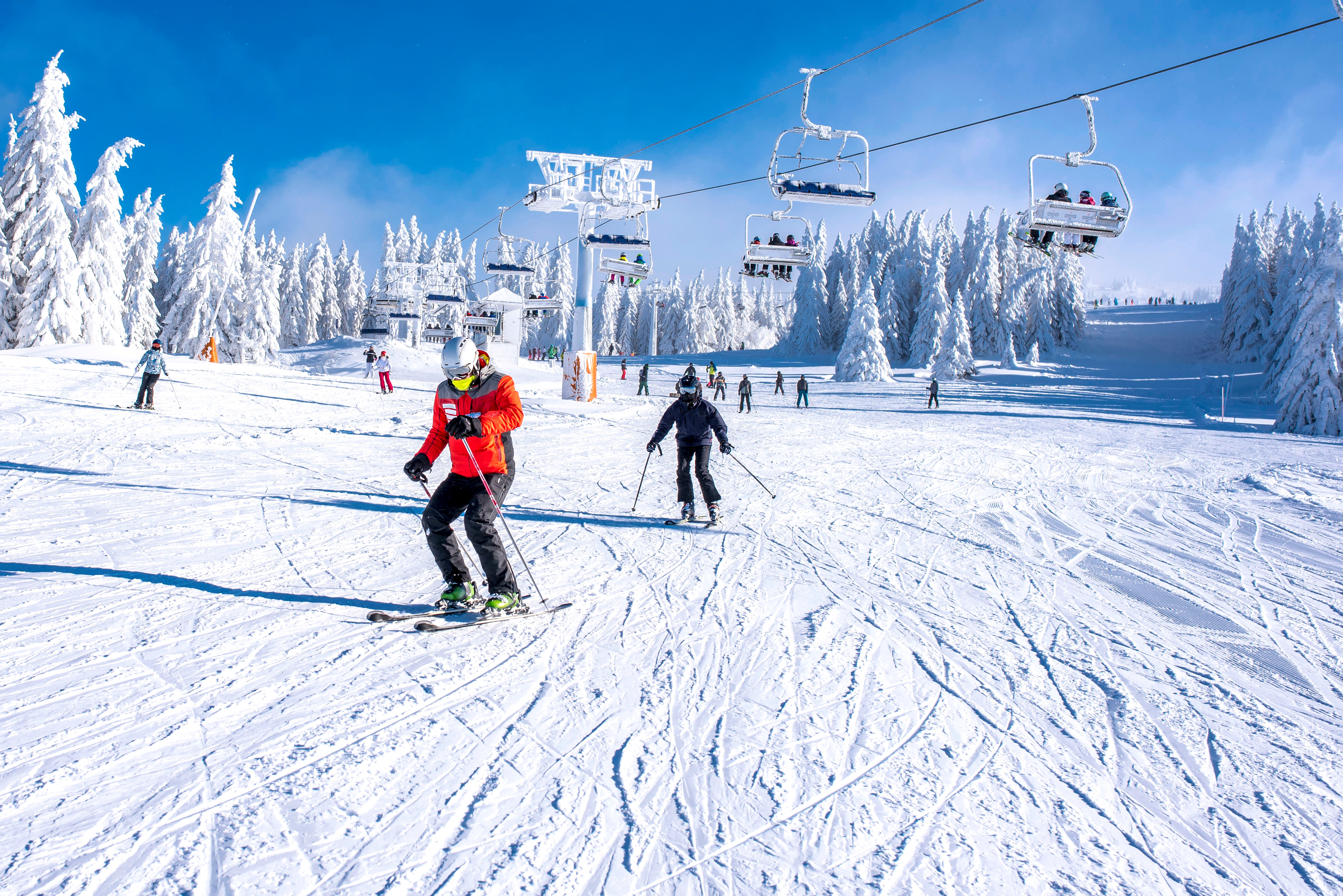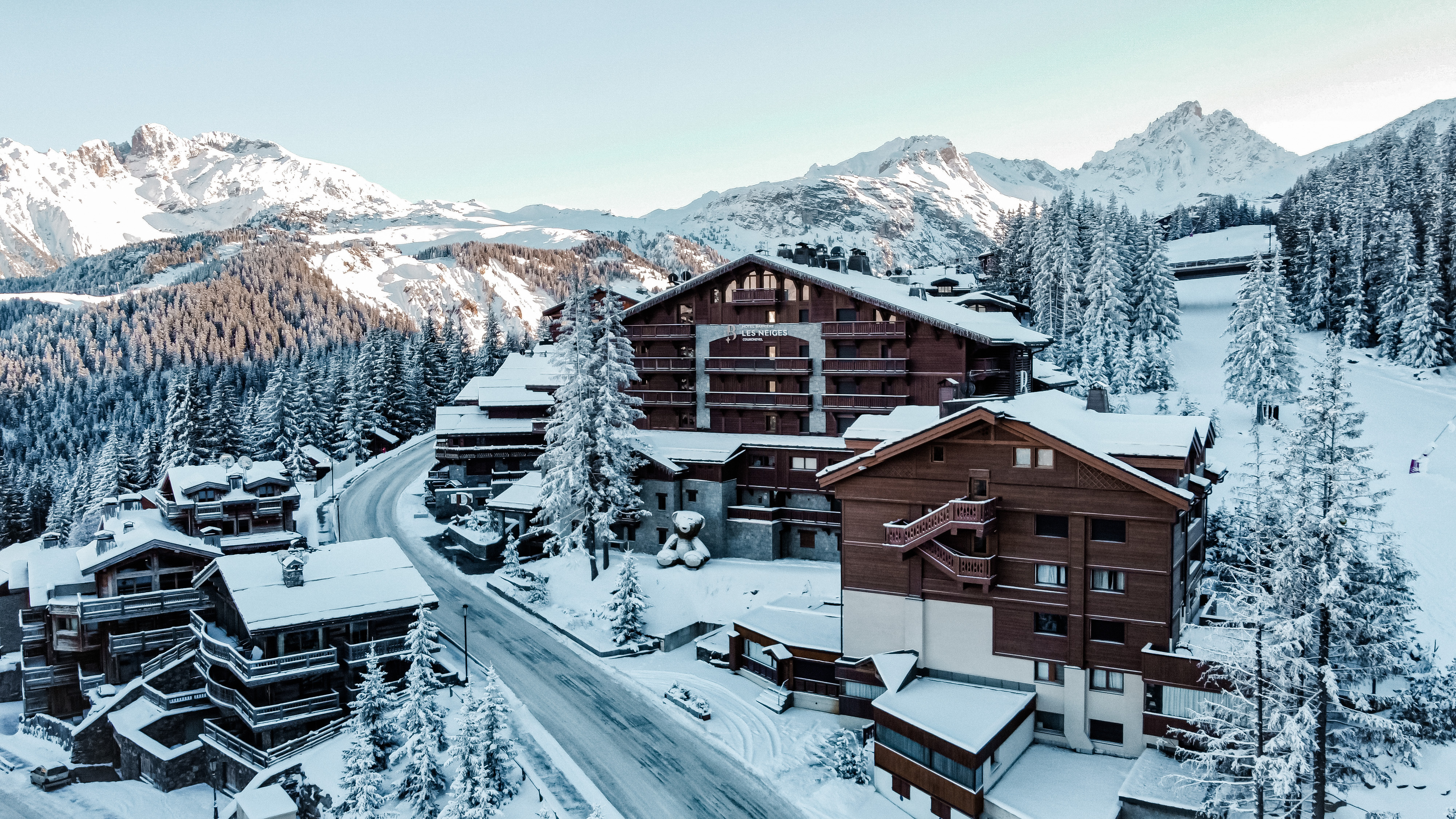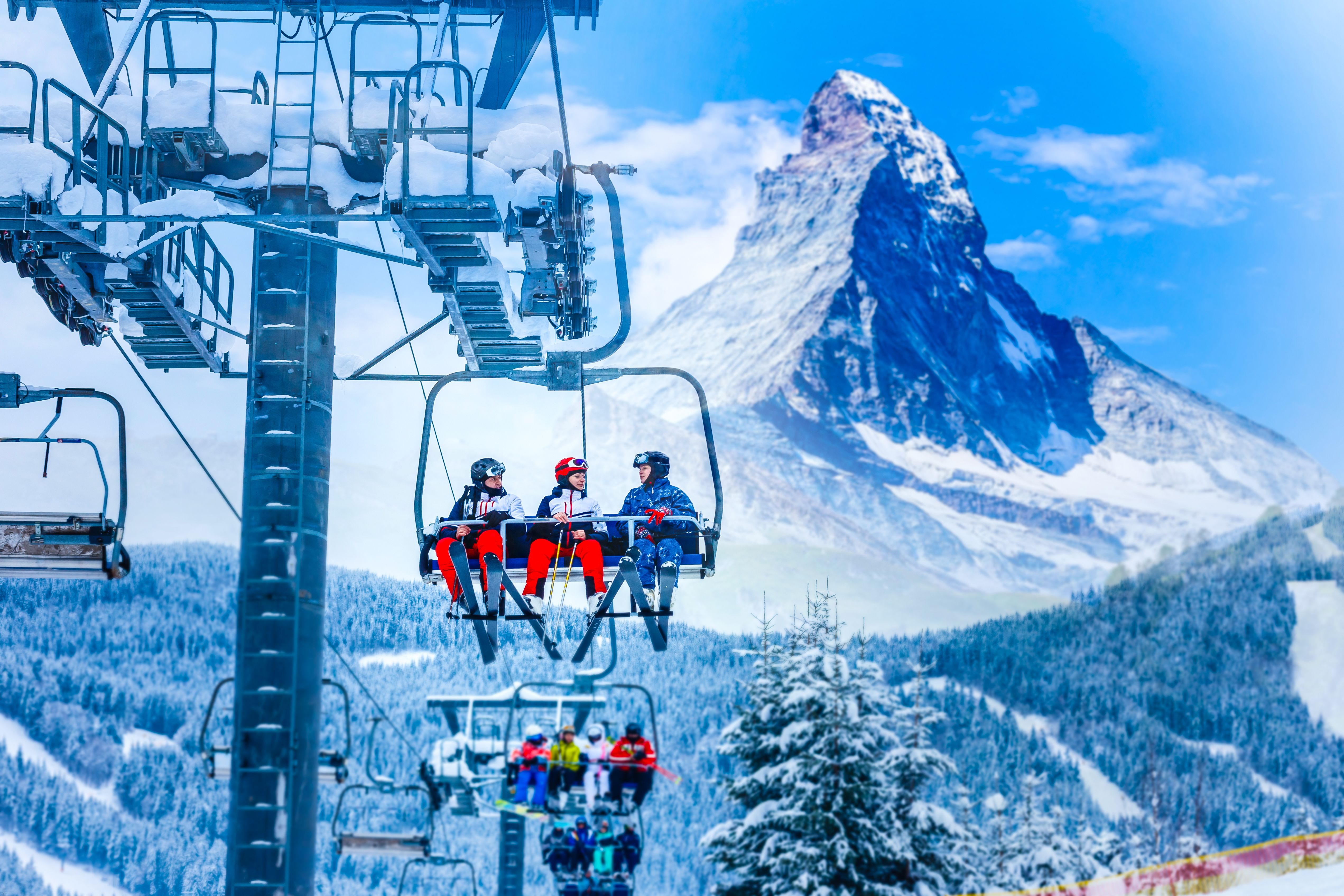How To Plan A Ski Trip
If you’re wondering how to plan a ski trip, you’re not alone. The proliferation of resorts, passes, and types of skiing has made it harder than ever to figure out where to go, how to pay for it and what to bring along.
And it only gets more complex if you’re wondering how to plan a family ski trip, a group ski trip, or a ski trip for beginners and experts.
This guide will help you sort through the clutter and plan a ski trip that fits everyone’s skill level and lifestyle.
How to plan a group ski trip
The best place to start planning a ski trip with a group of people is with yourself. You need to understand where you are as a skier – and you need to be honest about your skill level.
Specifically, you have to be honest about things like:
- Whether you’re scared of heights – and therefore, lifts
- Your ability to ski in crowds
- Your ability to ski around obstacles
- Your ability to handle steep vertical drops
- Your ability to ski on different snow types
- Your willingness to ski in cold, windy, or snowy conditions
- Your ability to do turns and stops
If you’re not honest and wind up at a destination that’s too advanced, you’re not going to have a good time, and you’re going to put yourself and others in danger.
If you don’t feel comfortable evaluating yourself, get an evaluation from an experienced skier who’s been to different resorts.
You can also perform a self-assessment using established guidelines. Mt. Baker has a simple but instructive tool that can help you determine your proficiency level, which in turn can help you decide where to ski.
And not only is it important for you to self-assess, it’s important for everyone in your party to be assessed as well. You can do it for the kids in your group, but all the adults have to step up and acknowledge their skills and limitations.

How to plan a ski trip for beginners
Suppose you do an assessment and ... well, you don’t get a high score. How does that affect your trip planning?
The good news is that it doesn’t have to affect it much, if at all.
Many resorts around the world have great runs for beginners. The key things to look for are:
- Wide runs
- Less vertical drop
- Temperate conditions
- Fun things to do when you’re not skiing
- The ability to scale up your degree of difficulty
- Available ski instruction
Among the top resorts in the U.S. that check all the boxes are:
- Sugarloaf Mountain, Maine
- Steamboat Springs, Colo.
- Park City Mountain Resort, Utah
- Stowe, Vt.
- Mammoth Mountain, Calif.
Top international destinations include:
- Corina D’Ampezzo, Italy
- Alpe d’Huez, France
- Meribel, France
- Wengen, Switzerland
- Lech, Austria
In most cases finding beginner-friendly ski destinations just requires an additional search step. And best of all, these destinations are great for more advanced skiers, too.
How to plan a ski trip with friends
To that last point, suppose you and your friends decide to go on a ski trip, make your assessments, and you’re all over the board skill-wise. You have different ideas of where you want to go, what you want to eat, how late you want to stay up, and you disagree on how long you want to be gone.
What do you do?
- Be flexible. Be cognizant of where everyone is in their ski journey. Ask them what a fun ski vacation looks like to them and then look for commonalities.
- Indulge everyone’s whims at some point in the trip. In addition, be sure to give everyone some responsibility for a facet of the trip, even if it’s planning an evening’s activities.
- Look for consensus, but don’t demand it. If there’s a decision you feel needs to be made that’s getting bogged down in the back-and-forth, make it on behalf of the group. Sometimes everyone just needs to move on.
- Delegate authority if necessary. If you don’t like being in charge, delegate those duties to someone else, but it’s important to put someone in charge.
- Remember what’s important. You want to be as good friends after the trip as you were before – better, ideally. Don’t lose track of that.
How to physically prep for your ski trip
Finally, suppose you don't like what your assessment says about your fitness level for skiing. What do you do?
Getting in better ski shape is a good start.
Skiing is a core sport, so if you want to improve, strengthen your core. Planks and abdominal exercises, with or without weights, will help.
Better skiing also requires stronger legs – starting with the glutes and working all the way down. Exercises to help strengthen those muscles include:
- Squats
- Romanian deadlifts
- Box jumps
- Calf raises
- Hip circles
As with any exercise program, persistence is key. Keep at it and you’ll be better able to tackle the slopes.

Ski trip itinerary
You’re not to the fun stuff yet, unfortunately. There are still multiple decisions to be made, not the least of which being where you want to ski.
Let’s assume the basics: you and your party prefer downhill skiing to cross-country.
Cool. Now, do you like …
- Steep verticals?
- Deep powder?
- Icy, hard-packed runs?
- Backcountry skiing?
- Spring skiing?
If you’re skiing in the U.S. that’ll help dictate whether you should head to an eastern, western, midwestern, or coastal resort.
- Western runs tend to be steeper and more wide-open, with deeper powder, more runs at a given destination, and a greater variety of terrain for different types of skiers.
- Eastern runs tend to be narrower and icier, with less vertical drop and fewer runs per resort.
- Midwestern skiing tends to fall somewhere between. For instance, resorts in Michigan’s Upper Peninsula offer the openness and deep snow of the West with the East’s gentler verticals.
- Coastal ski resorts – like Whistler in British Columbia and Alyeska in Alaska – combine wet snow with steep, challenging runs.
If you go abroad everything changes. You want steepness and wetter snow? Narrower runs, longer runs, and more variety? Multiple resorts with a different vibe at each? Now you’re talking Alpine skiing.
There are other differences between Alpine and domestic skiing, including:
- Less room to go off-trail. Backcountry skiing is a reasonable thing at most ski resorts in the western U.S. In Europe it’s not recommended.
- Different colors to indicate difficulty. Basically the European blue is the U.S. green, the European red is the U.S. blue, and European green is super-bunny.
- Different modes of transport up the hill. Funiculars and cable cars are more popular in Europe.
- Different lifestyle. Many of the restaurants and cafes surrounding European ski resorts are so alluring that once you come down the hill you may not want to go back up again.
Finding one spot that suits everyone can get truly complex when some members of your group like one style of skiing and others like another. For that reason, a large group may want to choose a resort with lots of different types of runs or a region with multiple resorts with different personalities.
Choosing your season
Season? Winter – right?
Well, not necessarily. Depending on where you ski, the ski season can last a long time, and the longer it lasts the funkier it gets.
Many skiers love late-season skiing on melted-and-refrozen “corn” snow. In addition, late-season skiing often has the benefit of warmer temps and bright sunshine, meaning fewer layers and more freedom of movement (and better “slope rash” if you fall while wearing shorts).
The bottom line is that you don’t have to feel like ski season ends once the calendar turns to March. You can ski all the way into May if you feel like it.

How to pack for a ski trip
Check your gear
Before taking a big ski vacation, make sure your gear can handle it.
Take your skis in for a tune-up. Tell the techs where you’re thinking of going and ask whether they think your skis are up for it.
You can find lots of online chatter about Eastern skis versus Western skis, but for most people one very good pair of skis and boots can handle the powder of the West or the ice of the East – or the combo platter of the Alps.
In addition to your gear, inspect your clothing. If you’re heading to higher altitudes, especially in the Alps, where you’re likely to start above the treeline, you need gear that performs.
Function trumps style in cases like these, so make sure you have good goggles, great gloves, weather-shedding outer layers, and a sound helmet.
Pro tip: Heated ski gloves are totally a thing, and they’re totally worth it.
Choose your bag
Assuming you’re not renting everything at the resort, you need to get your gear from your home to your destination.
If you’re driving that’s not a big deal. If you’re flying, it is. And it gets exponentially more complicated if you're planning a family ski trip or a group ski trip. As with most trips, when it comes to luggage, your choice is between hardsided and softsided ski bags. Whichever way you go, choose one that’s rugged and spacious.
Most ski bags are designed to hold at least one pair of skis plus all the allied gear. You might be able to double up kids in one bag, but otherwise plan one bag per skier. Not sure where to turn? Travel + Leisure has a great rundown on the best bags.

How to plan a ski trip on a budget
Hunt for passes, discounts, and deals
When you’re figuring out how to plan a ski trip on a budget, discounts and deals are your best friends.
However, finding the best deals can be hard.
The way of the skiing world, especially out west, is to have a ski pass that covers multiple resorts. The ultimate is the Utah Ski Gold Pass, which allows unlimited days at unlimited resorts and starts at $10,000, but you can probably get away with something less than that.
Ski Utah has a great rundown of the passes available for its resorts. It also has an informative piece on where kids can ski free in Utah.
Elsewhere, Ikon and Epic are the two big pass-sellers. They offer a variety of passes depending on where you go and how long you’ll be skiing – and they also sell passes for some Alpine resorts.
Go midweek
You probably know this, but anyway: Skiing is cheaper when you’re not skiing on the weekends – even at the big “name” resorts.
Not only that, but do not – repeat, do not – plan a trip that has you driving from Denver to Vail on a Saturday. You’ll never get there. Throw in the occasional blizzard and it becomes even more of a hard no.
Pro tip: If you do drive from Denver or Salt Lake City to a ski resort, pack tire chains. You just might need them.
Find the lodging "sweet spot”
Whether you’re staying in a lodge, a hotel, a hostel, or a vacation rental, the closer you are to the slopes the more you’ll pay.
Ski-all-the-time types love the convenience, but it’s not necessary for you to stay right on the slopes.
For instance, if you’re skiing at Aspen but stay in Basalt and take the Roaring Valley Fork bus to the ski area, you could save $200-$300 a night, and you’ll get all the skiing you can handle.
European resorts are often even more mass-transit-friendly.
Put together a ski-trip meal plan
A ski vacation isn’t just about skiing, remember. It’s where you stay, where you eat, and where you want to explore when you’re not skiing.
Budget-conscious skiers will want to plan out meals, ideally executed back at their vacation rental. Start with an ample breakfast, pack high-protein snacks and lunch items, and then either cook a big dinner back at the rental or go out.
This approach can save tons of money and is lots of fun, especially with a larger group where cooking chores can be shared.
Dabble in the apres-ski life
On the other hand, if you’re a splurger, you’ll want to indulge in the apres-ski scene.
Europe has the apres-ski thing down pat. Zermatt, Innsbruck, Cortina, and more aren’t just great ski destinations – they’re great destinations, period.
How much that matters to you will help dictate whether you stay stateside or head overseas. You generally want to stay stateside for family ski trips with young kids; Europe is amazing for couples' trips or family trips with older children.
Get travel insurance
A travel-protection plan that covers your gear, like AdrenalineCare® from Berkshire Hathaway Travel Protection, means you can plan a ski trip with peace of mind knowing that if you make it but your skis don’t, you’re protected.
In addition, AdrenalineCare’s higher coverage levels for medical emergencies and evacuations can come in handy on ski trips that go a little sideways.
All of BHTP’s plans include travel assistance, and it’s easy to get a quote and get covered.
With the right snow, the right gear, and the right destination, your ski vacation is sure to be fun and memorable.
Just don’t forget those heated gloves.
Questions About Travel Insurance?
Check out our online guide, "What Is Travel Insurance All About?" We've provided in-depth answers to all your travel insurance questions, starting with the basics.